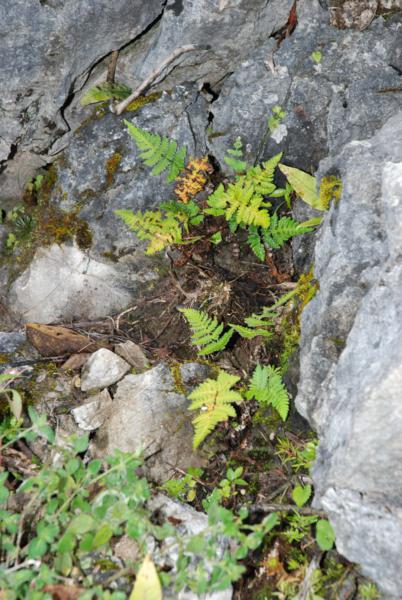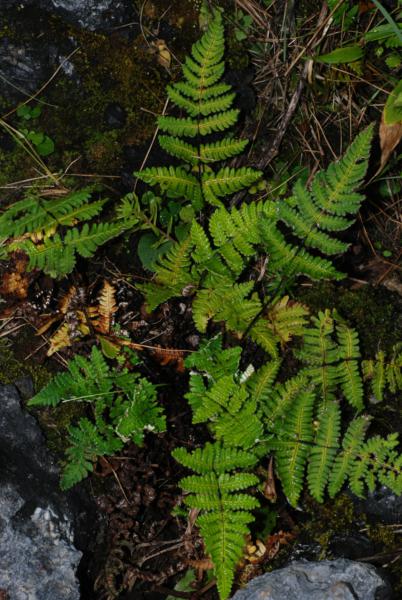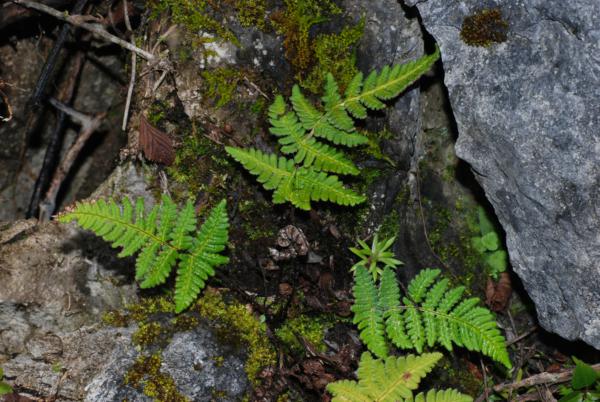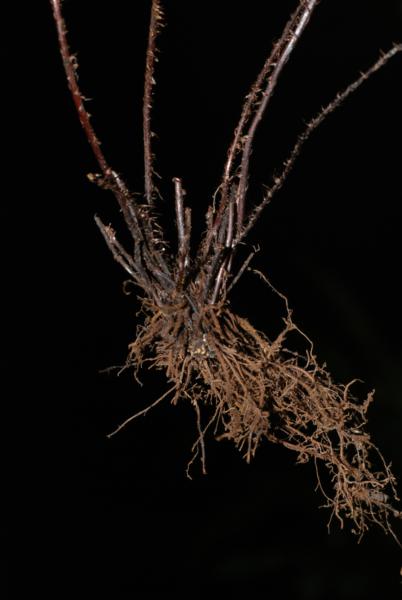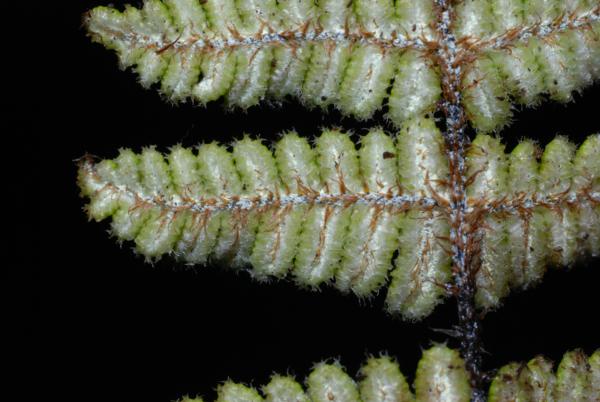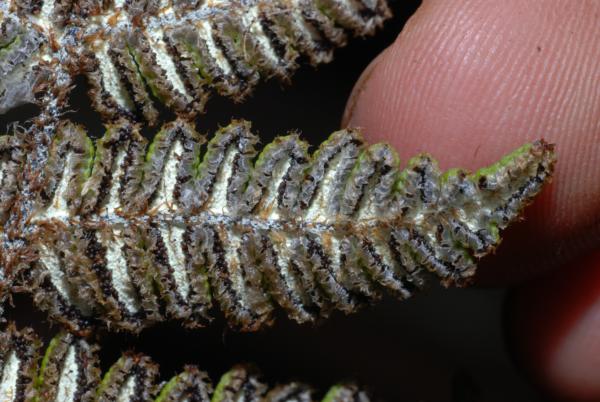
Cheilanthes rufa D.Don
Family
Pteridaceae, subfamily Cheilanthoideae
Nomenclature
Cheilanthes rufa D.Don, Prodr. Fl. Nepal.: 16. 1825; Holttum, Dansk Bot. Ark. 20: 33. 1961; Tagawa & K.Iwats., Fl. Thailand 3: 205. 1985; Tagawa & K.Iwats., Fl. Thailand 3: 618. 1989; Boonkerd & Pollawatn, Pterid. Thailand: 121. 2000. – Aleuritopteris rufa (D.Don) Ching, Hong Kong Naturalist 10: 200. 1941.
Cheilanthes subrufa auct. non Baker: Tagawa & K.Iwats., Fl. Thailand 3: 204, f. 15.4. 1985.
Description
Rhizome short, erect, covered with scales; scales linear to linear-lanceolate, gradually narrowing towards attenuate apex, bicoloured with dark brown centre and brown to pale brown margins, 3–5 mm long, up to 0.4 mm broad, entire. Stipes 12–20 cm long, castaneous to nearly black, polished, sparsely to densely scaly throughout, larger ones similar to those on rhizome, smaller ones linear, concolorously pale brown, internal walls of marginal cells sometimes projecting irregularly, the apical portion like the articulated hairs on frond margin. Laminae elliptic, oval or subdeltoid in outline, round to acuminate at apex, pinnatisect to bipinnatisect, 8–15 by 5–8 cm; rachis winged on both sides except in the lower portion, scaly; lateral pinnae several pairs, opposite or nearly so, the lowest the largest, pinnately lobed, asymmetrically subdeltoid, falcate, up to 5 by 4 cm, sessile, basal acroscopic lobes the largest; middle pinnae narrowly oblong, lobed to midway between costa and margin, round at apex, adnate at base; larger pinnules oblong, oblique, slightly falcate, round at apex, subentire or lobed; herbaceous or thicker, green, with lemon-yellow to nearly white powderly wax on lower surface; lower surface of costa, veins and veinlets scaly; scales linear, brown, the larger bicoloured, up to 2 mm long. Sori at end of veinlets, appearing more or less continuous, or round, protected by reflexed margin of lobes; uneven pellucid edge persistent, reniform or continuous, fimbriate .
Distribution in Thailand
NORTHERN: Chiang Mai, Nan.
Wider Distribution
Yunnan and N Vietnam.
Ecology
In crevices of rather dry limestone cliffs in open areas or forests at 900–2100 m.
Proposed IUCN Conservation Assessment
Data Deficient (DD). There is considerable taxonomic confusion in the genus Cheilanthes making accurate conservation assessments of many of the species difficult.
Notes
Cheilanthes is a difficult genus that needs more taxonomic research.
Voucher specimens - Thailand
Middleton et al. 4981, Chiang Mai, Doi Chiang Dao Wildlife Sanctuary (E).
Habit
Habit
Habit
Rhizome
Basal pinnae
Lower surface of lamina
Sori
Site hosted by the Royal Botanic Garden Edinburgh. Content managed by Stuart Lindsay, Gardens by the Bay, Singapore and David Middleton, Singapore Botanic Gardens. Last updated 24 January 2012
